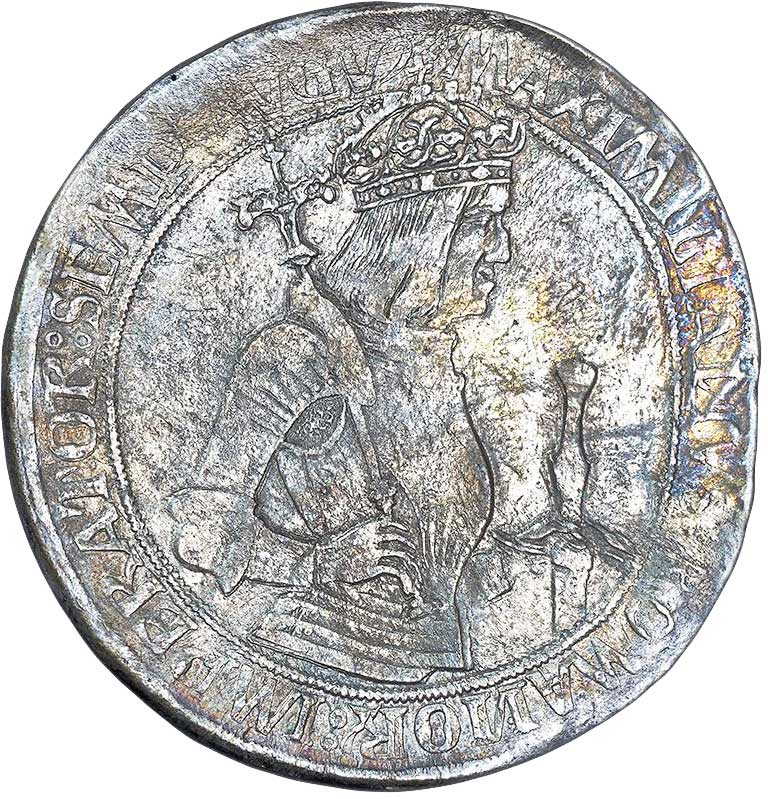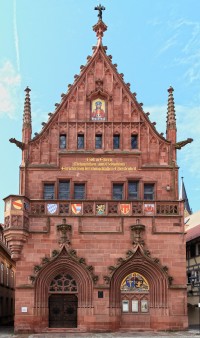Vorderseite: leer. Porträt des Kaisers: gekrönte Büste mit Rüstung, Zepter und Schwert. Umschrift: MAXIMILIANVS : ROMANNORum : IMPERATOR : SEMPer : AVGVstus
Rückseite: Auf dem Original: Gekröntes Wappen mit dem Doppeladler, umgeben von den Schilden Ungarn-Österreich (oben) und
Burgund-Habsburg (unten), dazwischen drei Feuereisen. Umschrift: PLVRIVMQue : EVROPaErum · ProVINCIARum · REX · ET · PRINCEPS · POTeNtissimus (= König über die meisten Länder Europas und mächtigster Fürst).
Stempel von Ulrich Ursentaler, Hall.
Maximilian I. hat diesen Kaiser Guldiner nach Annahme des Titels "Römischer Kaiser" prägen lassen.
en

